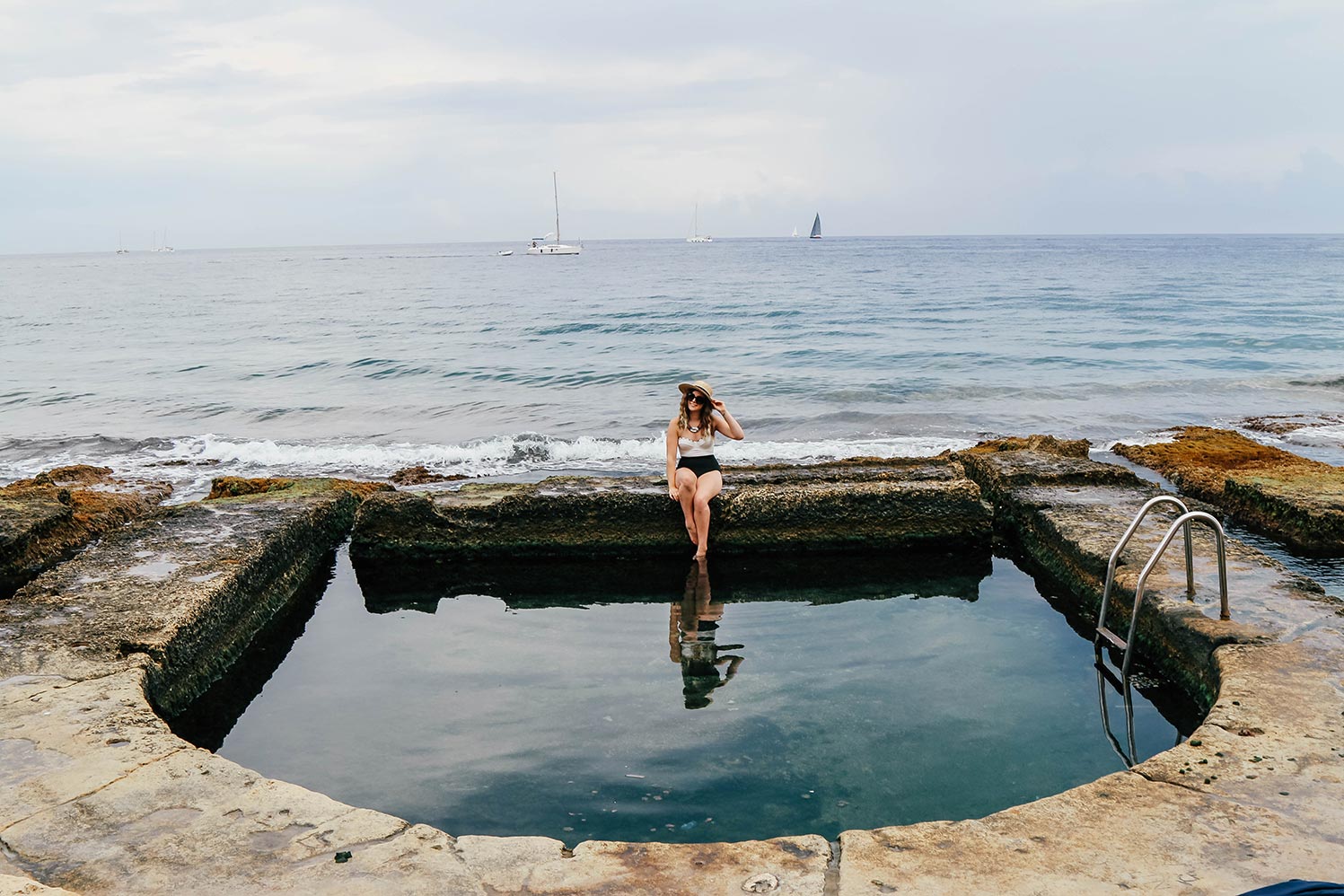Visiting the Sliema Roman Baths in Malta was something I did somewhat accidentally.
You see, after a day of roaming around Saint Paul’s Bay and relaxing at the Pebbles Resort Malta I was recharged and ready to spend the day exploring the island.
There were numerous places I wanted to visit whilst in Malta—and in classic Amy Morgan fashion, none of them were close to one another. As the ol’ locations of interest were all scattered across the island and in no way close to each other, I looked into hiring a car. However, the reviews of the hiring companies located near were a bit iffy, and the one company I found which wasn’t, didn’t have any cars available—so I ended up using the public transport system. A system which runs on time and is well-connected, but can take an age to get anywhere! Because of this, I packed a bag ready for a full day of exploring—and with a rough route in mind, set off.
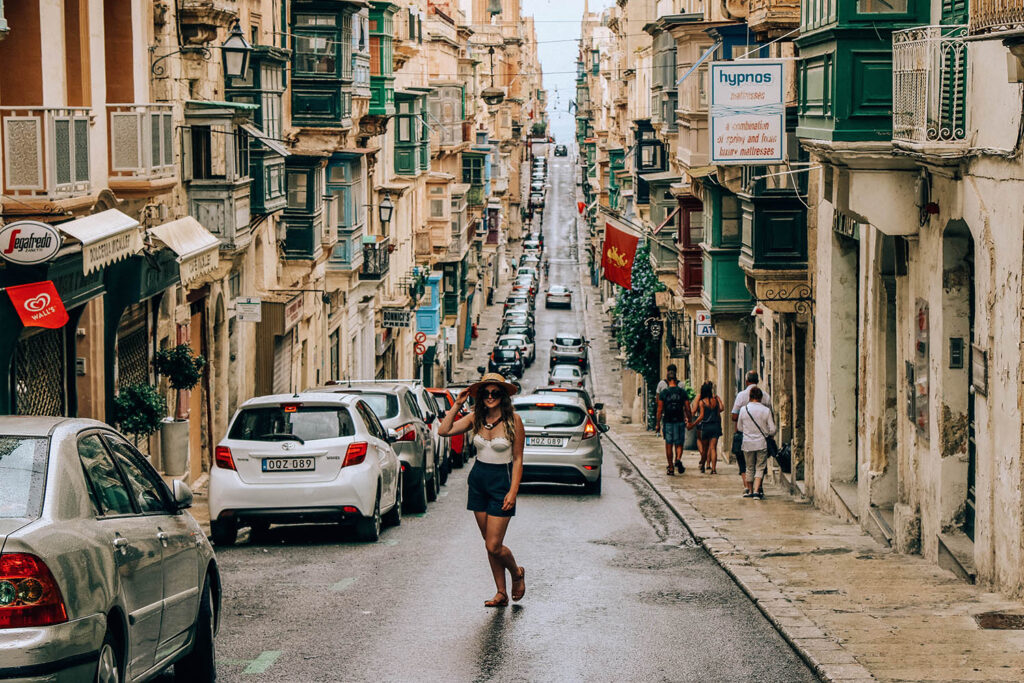
The first stop on my tour was Sliema. Back in the day, Sliema was a small village where fishermen and their families would reside. But in the 1950’s the development in the area really kicked off, and so when you fast forward to today, you’ll find that Sliema is a densely populated town filled with coastal-loving locals and tourists alike.
Due to the British influence (who ruled at the time), there used to be a lot of Victorian-style villas and townhouses in Sliema, however, the development which turned the area into the first resort town, saw many of these properties disappear. Yet traces of the Victorian era can still be seen. It can be seen in the art nouveau residences which remain on some of the inner streets, it can be seen on some of the prestigious Victorian properties on the seaside, and it can be seen in Sliema’s Roman Baths.
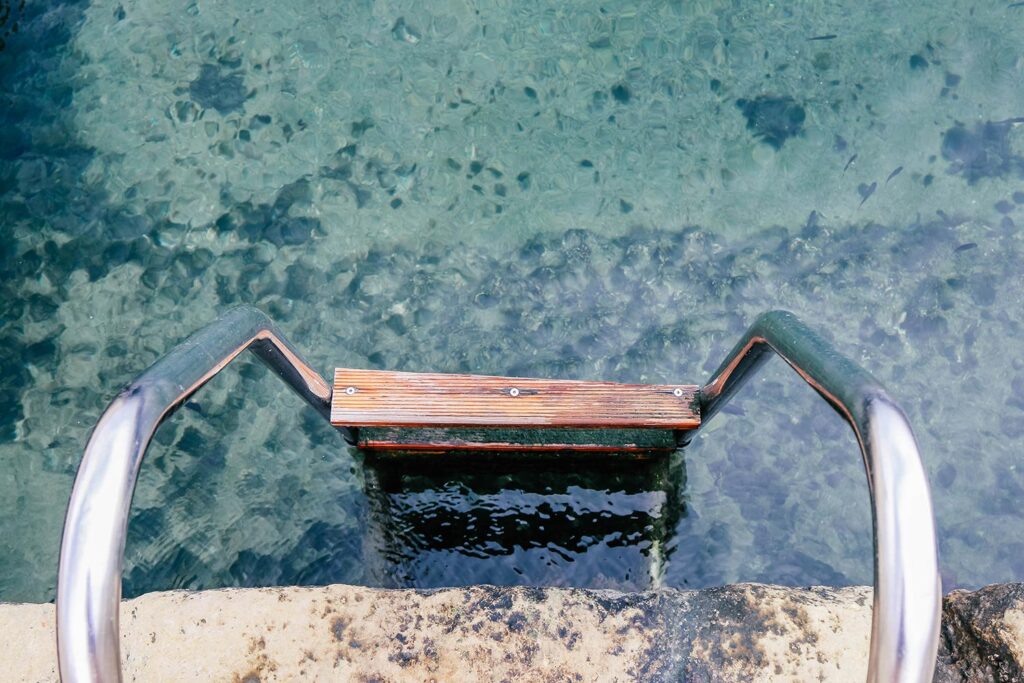
I know, I know, how can something “Roman” be Victorian?
I’ll tell you how!
You see, after walking along the coastal path, taking in the sights and Malta’s warm breeze, I stumbled across Fond Ghadir—one of Malta’s beaches.
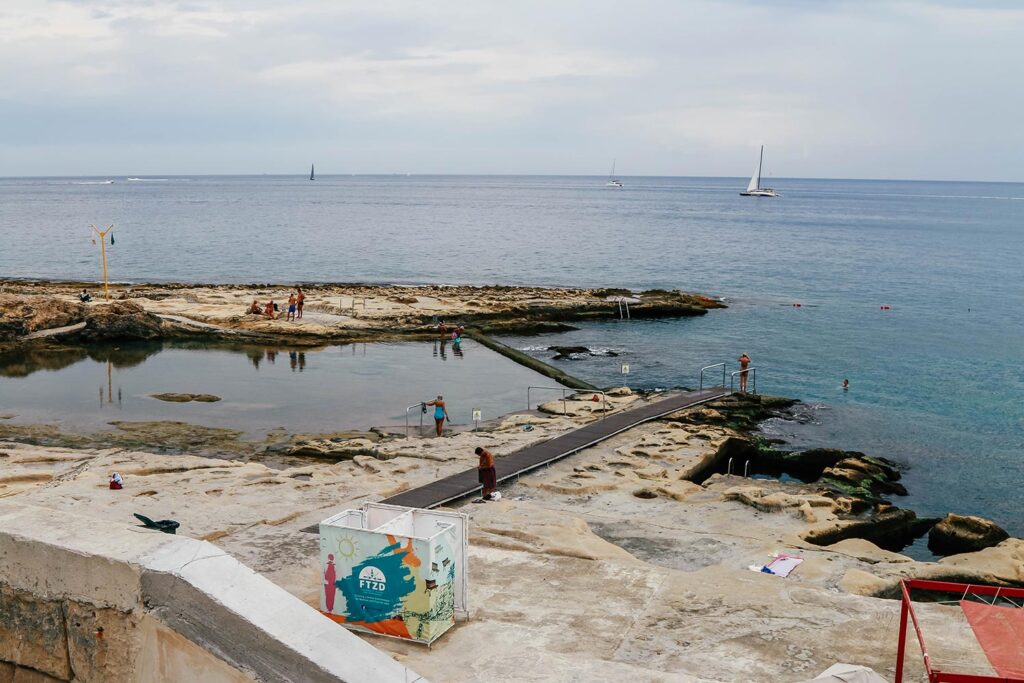
Not one to pass up an opportunity to be beside the sea, I walked down the steps and towards the ocean. It was here, just past the old salt pans and people getting ready for their morning swim, that I found Sliema’s Roman Baths.
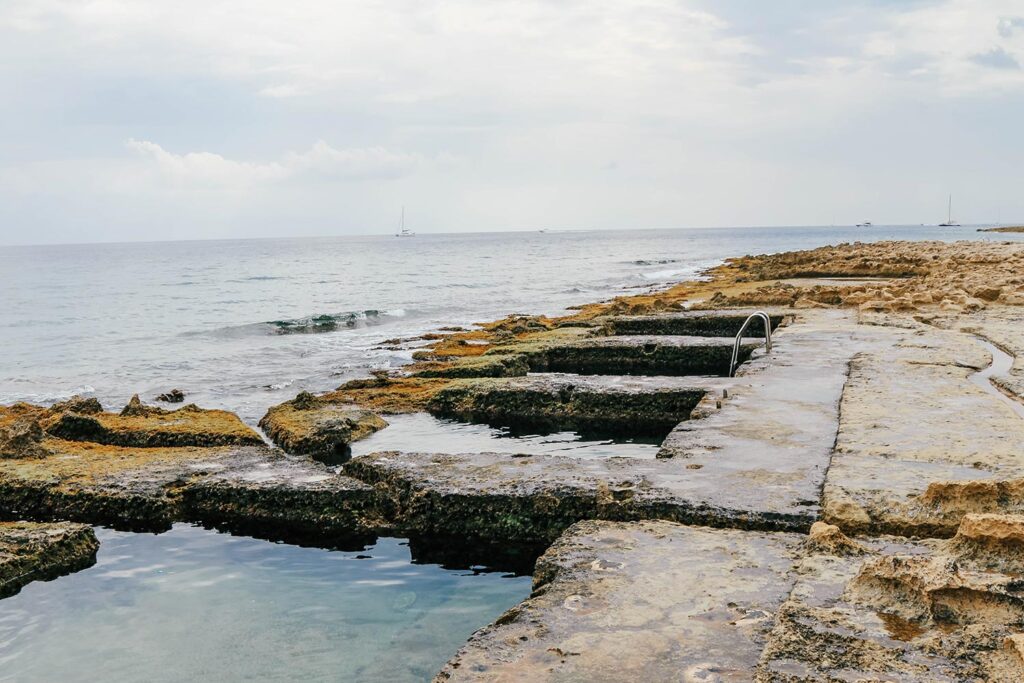
The Sliema Roman Baths are a series of square pools which have been carved into the rocks along the coast. Whilst often referred to as the Sliema Roman Baths, their exact creation date is not known. Some believe that the baths were dug out in the 1600s and others believe that they were formed and became popular during the Victorian Era by vacationing Brits dipping in the sea as a leisure activity.
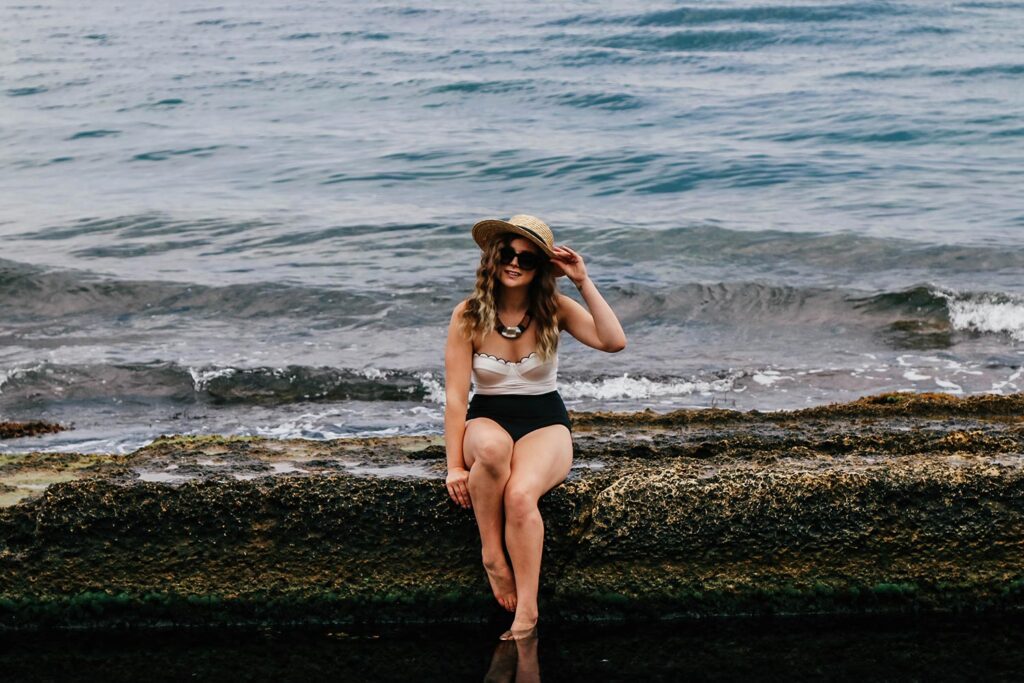
It’s believed that these pools were favoured as many Victorians could not swim and so the Sliema Roman Baths provided some semblance of protection from the changing tides and depths that the ocean brings. Each of the baths would have been covered with a canopy for shade and privacy, and if you look closely in the corner of these baths, you’ll see where the wooden posts would have been planted.
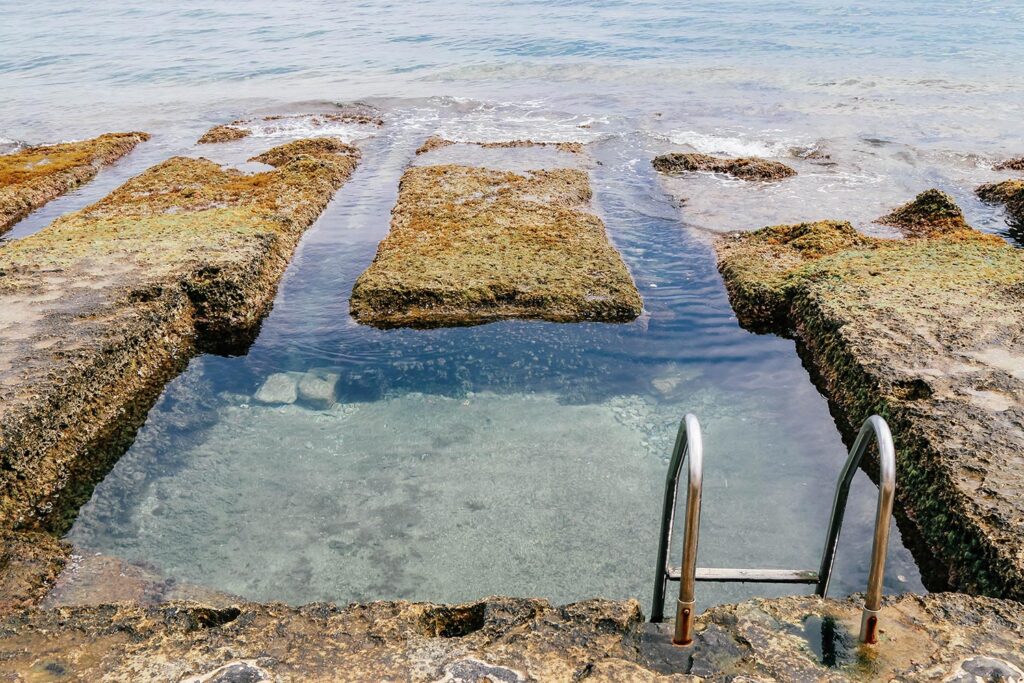
You see, back then stripping off into your bikini for a quick dip didn’t happen. Swimming wasn’t something you could do spontaneously, let alone in a bikini—not according to Folklorist Arthur Grima anyway! In 1992 he wrote in the l-Inwara journal that up until the 1930’s “whenever you see a woman at the sea you would have thought that she had fallen in the sea as she would have been fully clothed.”
It’s strange to think that in those times, women would have gone swimming wearing more clothes than I was wearing for a day of exploring. But the great thing about swimming costumes and bikinis these days? You can slip them under your clothes, meaning when you find something as irresistible as the Sliema Roman Baths, you can strip off and shimmy straight in.
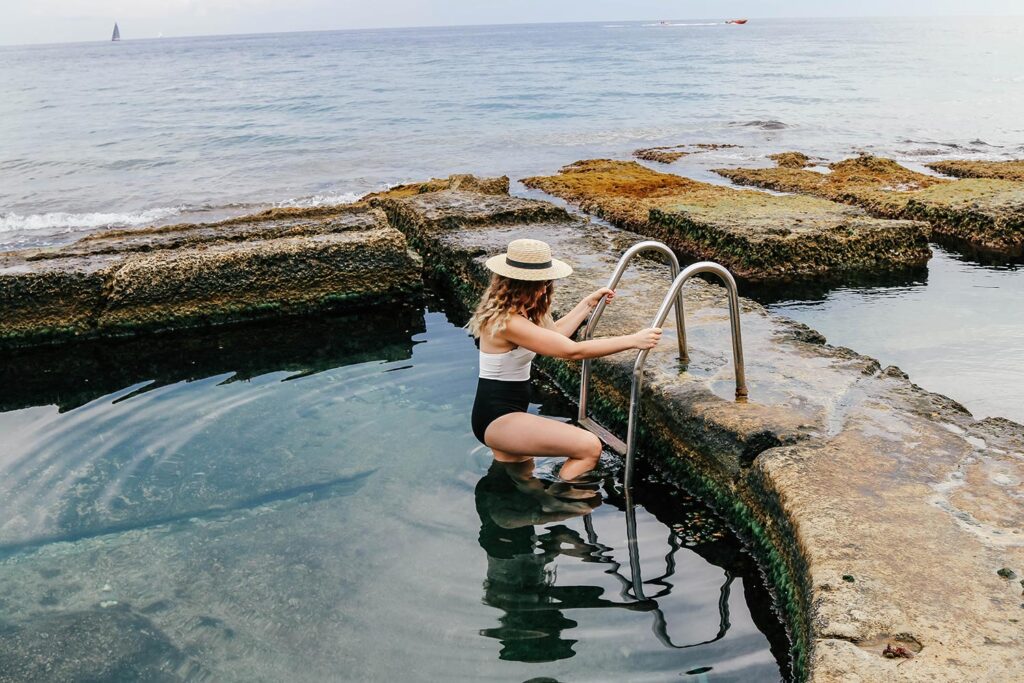
I arrived relatively early so had my pick of the pools to choose from. However, there were families already there, teaching their littles how to swim. The foreshore is rocky, so you’ll want to take water shoes. I didn’t, and in both shoes and barefoot it was slippery, but despite my predisposition for being clumsy, I persisted. Throwing my clothes to one (dry) side and testing out the water.
Spoiler alert: it’s cold.
The Sliema Roman Baths are filled with fresh water which circulates due to the one or two gutters which have been cut into the rock, allowing the water (and fish) to flow in and out freely.

Due to erosion over the years, each of the pools is different and has varying depths of water. Yet the water is clear in each of them, making it a little difficult to tell just how deep some of Sliema Roman Baths are. But you shouldn’t worry, as some of the pools have steps descending into them. Many of these have eroded, but Malta’s on it and have added ladders in for additional safety, so fear not!
It’s like having your own sea-view private pool, except nowadays, those Victorian canopies aren’t there, and due to their popularity, it’s not quite as peaceful as it may have been back then. But regardless, dipping into Sliema’s Roman Baths is like taking a dip in history.
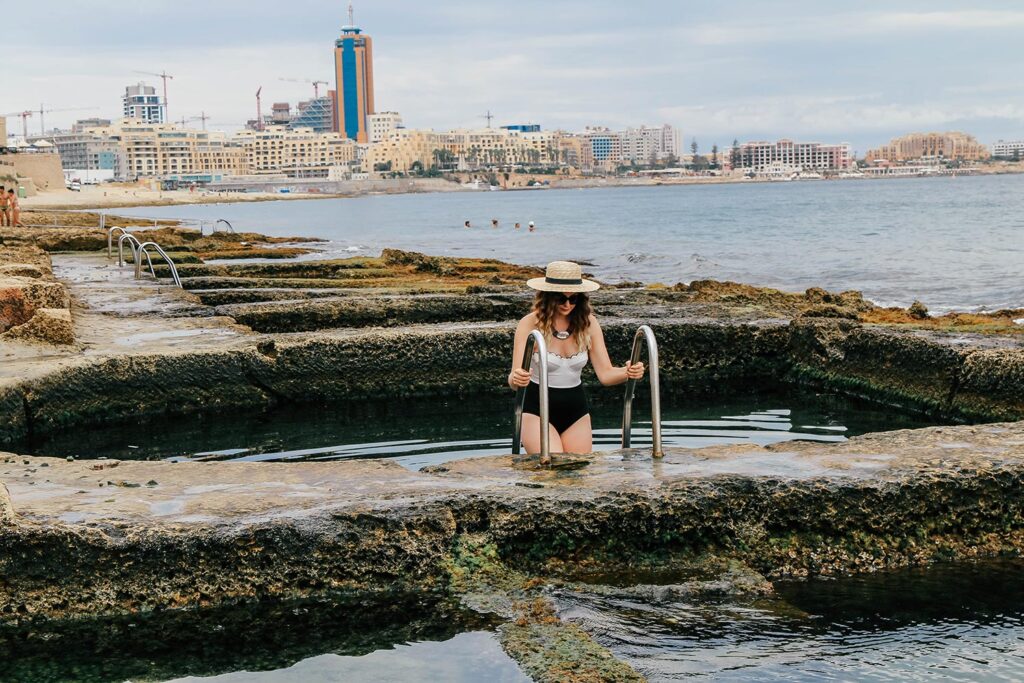
After testing out the water in the Sliema Roman Baths, I continued on my way walking along the water’s edge, which is where I noticed just how much the Maltese utilise the sea. I don’t just mean that with watersports, boat trips or scuba diving excursions. But all along the seafront, you’ll find areas sectioned off with netting/rope for swimmers and ladders bolted into rocks every so many metres, for ease of getting in and out. It’s clear that Malta is a country that loves a good swim!
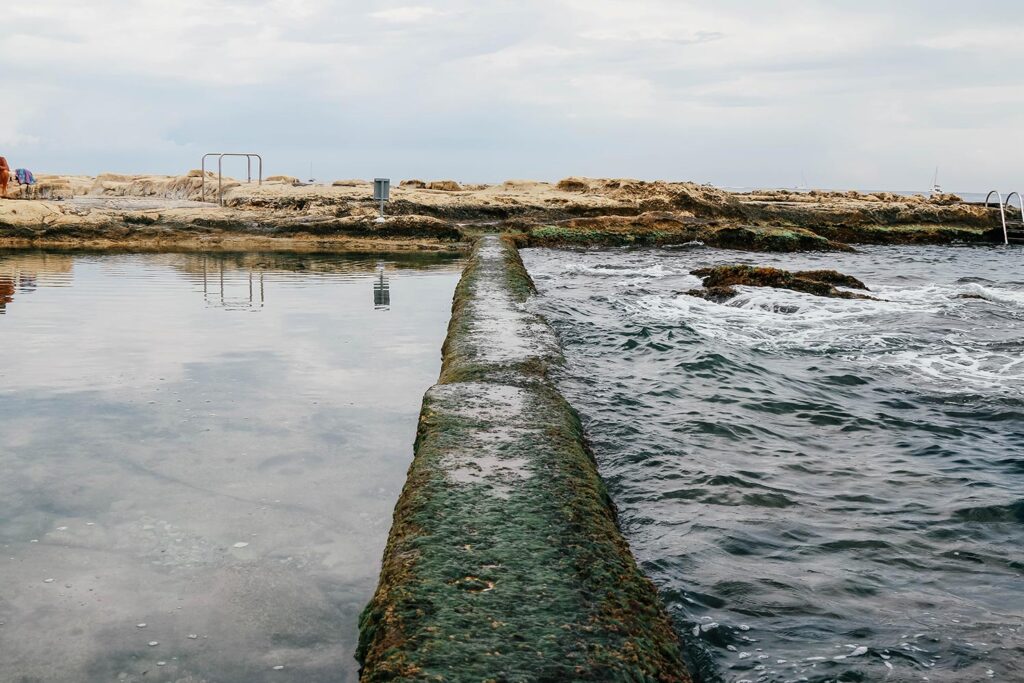
With that, my time at the Sliema Roman Baths in Font Ghadir was over and I continued on my way for a day of explorations… But more on that later!
